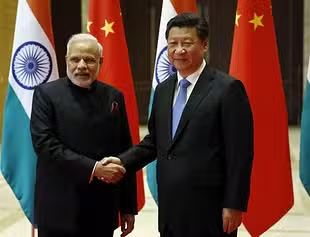
New Potential Economic Boom for India
India’s Struggles in Capitalizing on the ‘China Plus One’ Strategy, Says NITI Aayog Report
Limited Gains as Global Supply Chains Shift Away from China
India has made only limited progress in attracting multinational companies seeking to diversify their supply chains under the ‘China Plus One’ strategy, according to NITI Aayog’s latest Trade Watch report. While India’s large market, labor force, and proximity to China should make it an attractive destination for global companies, the country has not been able to fully capitalize on this opportunity.
The report highlights several key barriers hindering India’s competitiveness, including inadequate infrastructure, policy uncertainty, and a lack of focus on high-tech manufacturing.
US-China Trade Conflict Presents a Window of Opportunity for India
The recent escalation of the US-China trade war has raised questions about the stability of global supply chains. The US has imposed new restrictions on Chinese exports, particularly targeting advanced technology sectors, while China has retaliated by halting exports of essential materials to the US.
This conflict presents an opportunity for India to attract global companies looking to reduce their dependency on China. NITI Aayog’s CEO, BVR Subrahmanyam, has emphasized that India must act swiftly to capture the trade diversion created by this ongoing conflict. According to Subrahmanyam, “If we prepare well, there could be a massive economic boom from this disruption.”
Key Challenges Hindering India’s Success in ‘China Plus One’ Strategy
- Infrastructure Deficiencies: India’s existing infrastructure for logistics, ports, and transportation remains inadequate to handle the volume of goods and services required by multinational companies.
- Inconsistent Trade Policies: Frequent changes in policies, especially in taxation and foreign investment, have created an uncertain business environment, making it harder to attract and retain global investors.
- Limited Focus on High-Tech Manufacturing: India’s manufacturing sector still depends heavily on imported raw materials and lacks the capacity to produce high-tech products like semiconductors and advanced electronics.
- Skills Gap: While India has a large labor force, the shortage of skilled workers in industries such as automation, AI, and robotics makes it difficult to compete with other countries.
What India Must Do to Capture the Opportunity
- Upgrade Infrastructure: Investing in modernizing transportation networks, ports, and logistics will make India a more attractive destination for multinational companies.
- Stabilize Trade Policies: Clear and consistent regulations will instill confidence among investors and businesses, leading to long-term investment in India.
- Foster High-Tech Manufacturing: India must incentivize the production of high-tech goods, particularly in sectors like electronics, pharmaceuticals, and renewable energy, to boost its standing in global supply chains.
- Develop a Skilled Workforce: Creating and implementing training programs to equip workers with the skills needed for advanced manufacturing is essential to building a competitive labor force.
- Can India Seize the Global Supply Chain Shift?
The ongoing US-China trade conflict creates a golden opportunity for India to emerge as a key player in global supply chains. However, India’s success in capturing the ‘China Plus One’ strategy will depend on addressing its infrastructure, policy, and workforce challenges.
With swift action and strategic investments, India could become the preferred destination for multinational companies looking to diversify their supply chains away from China, marking a significant milestone in its economic growth.